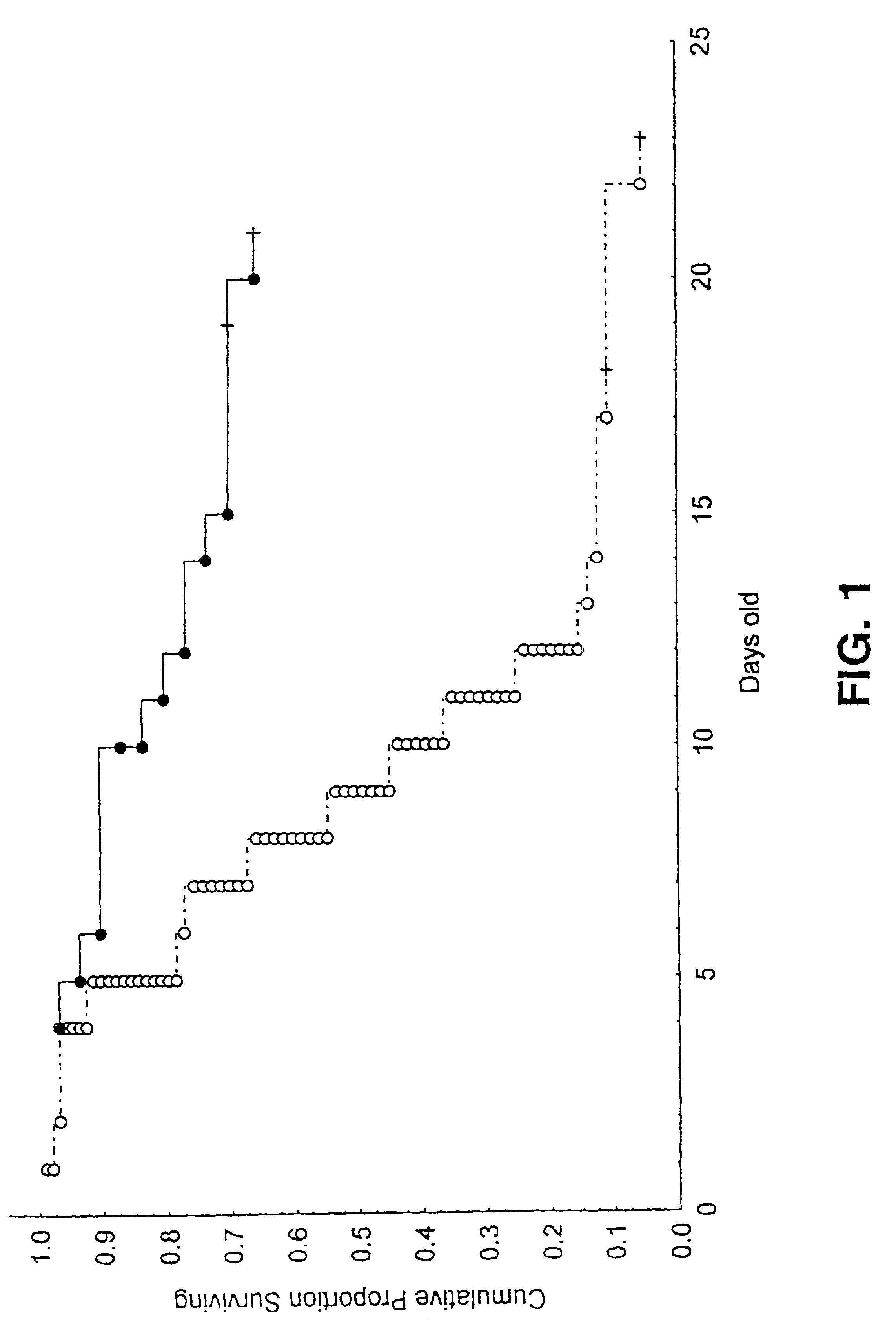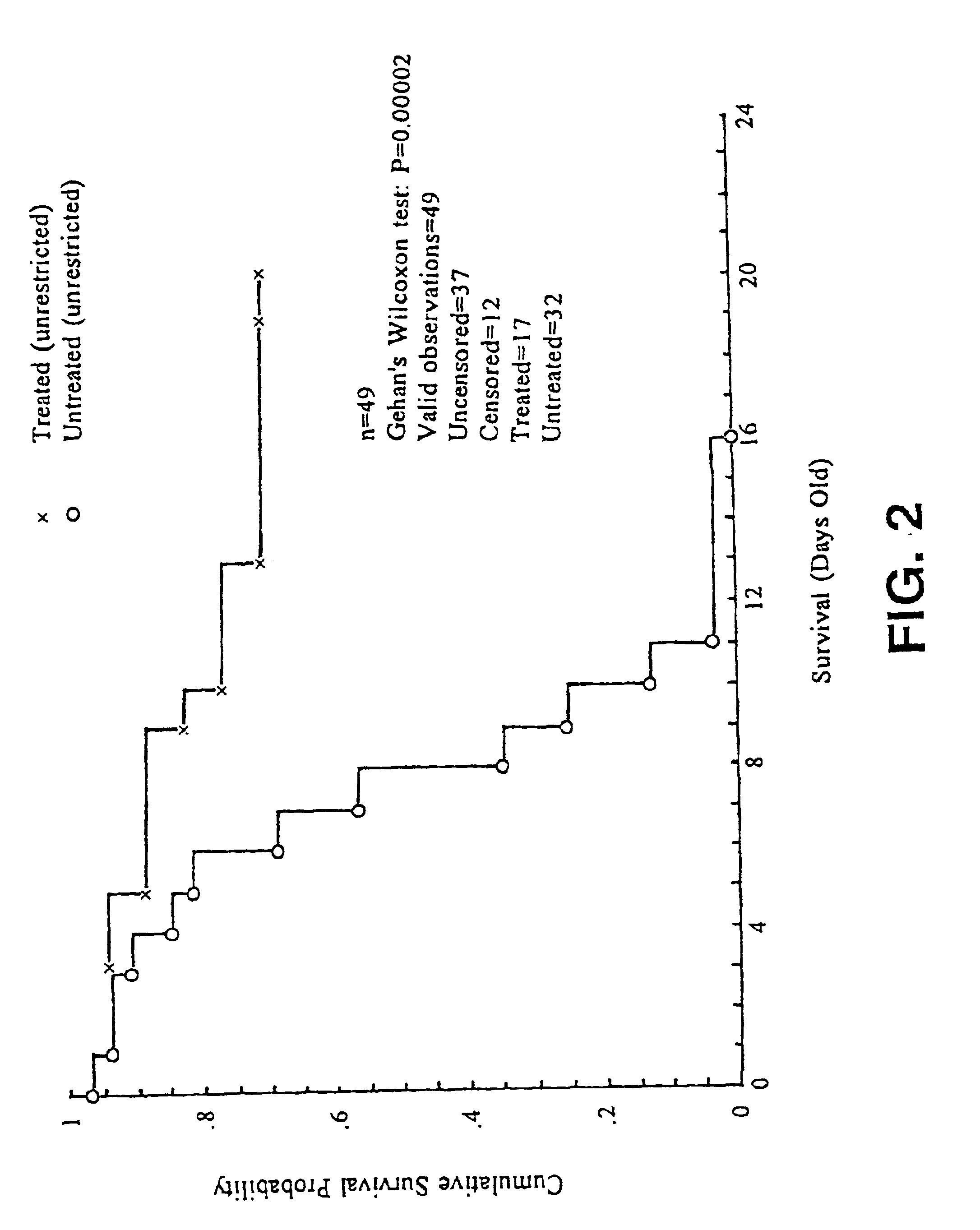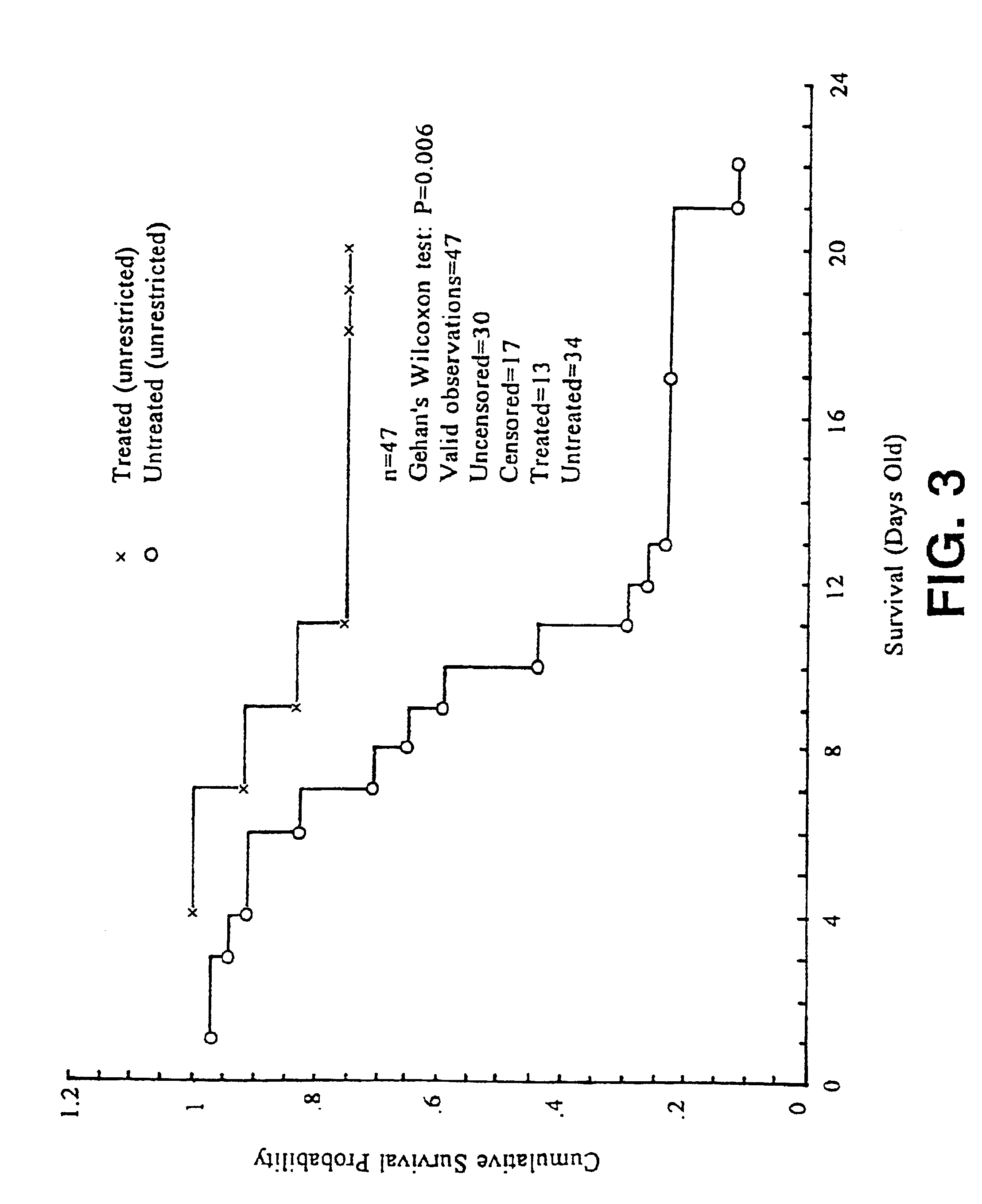Methods for identifying compounds as antioxidants
a technology of antioxidants and compounds, applied in the field of animal model system testing of pharmaceuticals, can solve the problems of not preventing the development of overt neurological symptoms, and achieve the effects of preventing the development of overt neurological symptoms, and prolonging the survival of homozygous mnsod-deficient mi
- Summary
- Abstract
- Description
- Claims
- Application Information
AI Technical Summary
Benefits of technology
Problems solved by technology
Method used
Image
Examples
example 1
[0057]Mice lacking functional MnSOD have been described by Li et al. (1995) Nature Genetics 11:376-381, incorporated herein by reference. The genotypes of one-day-old pups are determined by genetic analysis of tissue surgically excised from the toe or tail tip (2-3 mm). In these mice the third exon of the Sod2 gene has been deleted, thus, destroying the ability to synthesize an active mitochondrial MnSOD.
[0058]Genetic analysis of tissue in 2 day old mouse pups is done by first extracting DNA from each tissue sample using Proteinase K digestion (30 min) and then carrying multiplex polymerase chain reaction using three primers, one shared (A, 5′-CGAGGGGCATCTAGTGGAGAAG-3′; SEQ ID NO:1) and one each per mutant (C, 5′-CACACATCGGGAAAATGGTTT-3′; SEQ ID NO:2) and for normal (B, 5′-TTAGGGCTCAGGTTTGTCCAGAA-3′; SEQ ID NO:3) alleles. Tail tips were lysed, vortexed, and used in a biphasic PCR reaction using PCR Gems 50 (trademark of Perkin Elmer, Foster City, Calif.) (0.4 μM primers,...
example 2
[0059]Mice are housed under standard animal housing conditions with a normal day / night cycle and fed normal mouse chow (not high-fat) (Labdiet 5001, PMI Feeds Inc., St. Louis, Mo.). Nursing mothers are housed in individual cages with their offspring. They have free access to food and water (ad libitum. Fresh bedding and a change of cage litter are provided twice per week.
[0060]Litters were grouped into two sizes: large, >6 pups / litter of mutant, heterozygous and normal pups; and small, ≦6 Sod2CJE(− / −) pups / litter, in which the wild type and heterozygous pups were removed at three days of age to ensure that the homozygous mutant pups had unrestricted access to food and nurturing.
[0061]Test mice are weighed daily to allow calculation of appropriate dosage, but otherwise, handling is kept to a minimum to reduce stress on the nursing mother.
example 3
Preparation of MnTBAP
[0062]H2TBAP (5,10,15,20-tetrakis [4 benzoic acid]) porphyrin (Aldrich, Milwaukee, Wis.) at 85% purity was used as the starting material. H2TBAP was dissolved in dimethyl formamide (DMF) and refluxed overnight at 80° C. in the presence of excess manganese chloride while bubbled with room air. The reaction product was chilled in an ice bath upon which the product precipitated out of solution. The filtrate was washed several times with ice cold water and dried in a vacuum oven. The resultant product, termed MnTBAP in this report, was found to be >91% pure by HPLC analysis using a Microsorb MV C18 column. Elemental analysis on MnTBAP-DMF was performed and the results were as follows, calculated for C48H27N4O8—H2O—C3H7NO: C, 65.60; H, 3.89; N, 7.5; Mn, 5.88; found: C, 65.62; H, 3.7; N, 7.13; Mn, 4.66.
[0063]In most experiments, MnTBAP was prepared for injection by dissolving in 0.1 M NaOH, diluted with sterile water to a dosage level of 5 mg MnTBAP / kg, and administer...
PUM
| Property | Measurement | Unit |
|---|---|---|
| Time | aaaaa | aaaaa |
| Time | aaaaa | aaaaa |
| Fraction | aaaaa | aaaaa |
Abstract
Description
Claims
Application Information
 Login to View More
Login to View More - R&D
- Intellectual Property
- Life Sciences
- Materials
- Tech Scout
- Unparalleled Data Quality
- Higher Quality Content
- 60% Fewer Hallucinations
Browse by: Latest US Patents, China's latest patents, Technical Efficacy Thesaurus, Application Domain, Technology Topic, Popular Technical Reports.
© 2025 PatSnap. All rights reserved.Legal|Privacy policy|Modern Slavery Act Transparency Statement|Sitemap|About US| Contact US: help@patsnap.com



